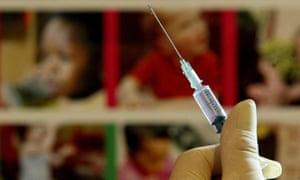http://www.sciencemag.org/news/2016/08/woman-may-know-secret-saving-brain-s-synapses?utm_campaign=news_weekly_2016-08-19&et_rid=167369815&et_cid=731076
This is an article from Science about a neuroscientist at BostonChildren's Hospital working on gene knockout mice looking at the gene C1q, which is necessary for synaptic refinement, which is important in development for organization of the neurvous system, called "pruning". Later in life, C1q can cause nervous system damage. This may lead to therapies for glaucoma and other neurodegenerative diseases.
 http://www.nytimes.com/interactive/2016/08/20/sunday-review/climate-change-hot-future.html?_r=0
http://www.nytimes.com/interactive/2016/08/20/sunday-review/climate-change-hot-future.html?_r=0 This is a graphic in the Sunday Review section of NYT, with a projection forward to 2100, of the days over one hundred degrees in the US. In 1991-2100 Phoenix had 92, 2060 projection is 132, 2100, projection is 163. This work was done by an environmental research group called Climate Central. A publication in Nature last year said that 3 out of 4 daily heat extremes can be linked to global warming. Invest in sunscreen.
http://www.scientificamerican.com/article/donald-trump-s-lack-of-respect-for-science-is-alarming/ From Scientific American, a column devoted to Donald Trump's lack of respect for science. For the September 1 issue.
 http://www.nytimes.com/2016/08/22/us/dr-donald-a-henderson-who-helped-end-smallpox-dies-at-87.html?_r=0
http://www.nytimes.com/2016/08/22/us/dr-donald-a-henderson-who-helped-end-smallpox-dies-at-87.html?_r=0 This is an obit in the NYT for Don Henderson, one of my heros, who was significant in the worldwide eradication of smallpox.
 http://archpedi.jamanetwork.com/article.aspx?articleid=2543281
http://archpedi.jamanetwork.com/article.aspx?articleid=2543281 This is an article from JAMA Pediatrics about a data-mining study about the association of acetaminophen use during pregnancy and behavioral difficulties in children. Confounding variables do not invalidate the association.
 http://www.nytimes.com/by/gina-kolata
http://www.nytimes.com/by/gina-kolata This is an article in the Science Times by Gina Kolata about anew report that perhaps nodules on the thyroid do not necessitate surgery. This was a report in NEJM about the lifelong consequences of thyroid removal on patients with thyroid cancer, many of whose cancers never progress beyond the nodular stage.
 http://well.blogs.nytimes.com/2016/08/22/the-underused-hpv-vaccine/
http://well.blogs.nytimes.com/2016/08/22/the-underused-hpv-vaccine/ Article in Science Times by Jane Brody about the underutilization of the HPV vaccine. Parents don't get their pre-teens vaccinated due to their wish to believe they are not sexually active. The CDC reports that about 14 million Americans become infected with HPV annually, most teens or young adults. HPV is a cause of cervical cancer.
 https://www.theguardian.com/science/occams-corner/2016/aug/23/scientists-losing-science-communication-skeptic-cox
https://www.theguardian.com/science/occams-corner/2016/aug/23/scientists-losing-science-communication-skeptic-cox Article from The Guardian about scientists inability to communicate science to the public.
 http://www.sciencealert.com/thousands-of-strange-blue-lakes-are-appearing-in-antarctica-and-it-s-very-bad-news
http://www.sciencealert.com/thousands-of-strange-blue-lakes-are-appearing-in-antarctica-and-it-s-very-bad-news Article in Science News, Durham University, UK, glaciologists, as reported by Chris Mooney in the Washington Post, note the appearance of lakes in Antarctica. This does not bode well for the stability of the entire ice shelf. This was published in Geophysical Research Letters.
 http://www.nytimes.com/2016/08/24/health/zika-a-formidable-enemy-attacks-and-destroys-parts-of-babies-brains.html?_r=0
http://www.nytimes.com/2016/08/24/health/zika-a-formidable-enemy-attacks-and-destroys-parts-of-babies-brains.html?_r=0 This is a NYT article reporting from the journal Radiology about possible other effects on the brains of babies whose mothers were infected with the Zika virus that may continue after birth or throughout their development.Zika's brain targets are the corpus callosum, the basal ganglia and the cerebellum.
 http://www.nytimes.com/2016/08/25/science/gene-tests-identify-breast-cancer-patients-who-can-skip-chemotherapy-study-says.html?_r=0
http://www.nytimes.com/2016/08/25/science/gene-tests-identify-breast-cancer-patients-who-can-skip-chemotherapy-study-says.html?_r=0 This is an article from the Times about an important recent study published in NEJM of early stage breast cancer patients who were able to avoid chemotherapy and its consequences, which would not have been effective due to their genes. Their DNA showed they were at low risk for recurrence.
 http://www.the-scientist.com/?articles.view/articleNo/46600/title/New-Lyme-Disease-Test-Developed-by-Summer-Student/
http://www.the-scientist.com/?articles.view/articleNo/46600/title/New-Lyme-Disease-Test-Developed-by-Summer-Student/ This is an article from The Scientist about a new test for Lyme Disease that was developed by a summer student at George Mason U. It's a urine test that tests for the shedding of proteins by the causative agent,
Borrelia Burgdorferi. The test will enableearlier stage detection. The work was published in Biomaterials.





















